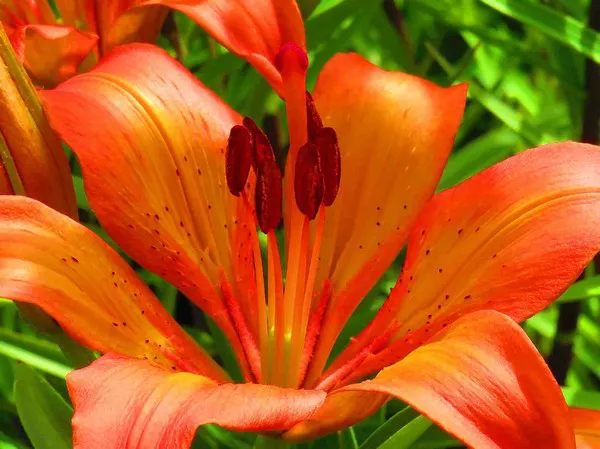Leeks, with their mild and distinct flavor, are prized ingredients in culinary dishes around the world. However, these versatile vegetables are not immune to the challenges posed by pests. To ensure a successful leek harvest, it’s essential to understand the pests that can attack them, implement preventive measures, and adopt effective management strategies. In this comprehensive guide, we explore the pests that pose a threat to leeks, the signs of infestation, and the proactive steps that can be taken to protect your crop.
1. Common Pests That Target Leeks
Leek Moth (Acrolepiopsis assectella): The leek moth is a notorious pest that poses a significant threat to leeks. Adult moths lay eggs on the leaves, and the larvae tunnel into the foliage, causing extensive damage. The presence of small, yellowish-brown mines on the leaves and visible larval activity are signs of leek moth infestation.
Onion Thrips (Thrips tabaci): These tiny insects feed on the sap of leek leaves, resulting in silvery streaks and discoloration. Onion thrips are vectors of viruses that can affect the growth and overall health of leeks.
Leaf Miners: Various species of leaf-mining insects, such as fly larvae, can infest leeks. They create winding tunnels or “mines” within the leaves, leading to reduced photosynthesis and overall plant vigor.
Aphids: Aphids are common sap-sucking insects that can cluster on leek leaves. They excrete honeydew, which attracts mold and encourages the growth of fungal diseases.
Nematodes: Nematodes are microscopic worms that can attack leek roots, leading to stunted growth, yellowing leaves, and decreased yield.
2. Signs of Pest Infestation
Visual Symptoms: Vigilant observation is key to early pest detection. Look for discolored, wilting, or distorted leaves, as well as visible larvae, eggs, or adults on the foliage.
Unusual Growth Patterns: Pests can disrupt normal growth patterns. Pay attention to stunted growth, misshapen leaves, or reduced leaf size.
Presence of Honeydew and Mold: If you notice a sticky substance on the leaves, it could be honeydew excreted by aphids. This can lead to the growth of sooty mold on the leaves.
Tunnels or Mines: Leaf miners and larvae often leave visible tunnels or mines on the leaves, characterized by winding, pale pathways.
3. Preventive Measures to Safeguard Leeks
Crop Rotation: Practicing crop rotation is an effective way to reduce the risk of pest infestations. Avoid planting leeks or other allium crops (such as onions and garlic) in the same location year after year.
Healthy Soil: Well-draining, fertile soil that’s rich in organic matter promotes strong plant growth and resilience against pests. Amending the soil with compost or well-rotted manure can enhance the overall health of leeks.
Companion Planting: Certain companion plants can help deter pests that target leeks. For example, planting aromatic herbs like thyme, rosemary, or marjoram nearby can repel pests.
Physical Barriers: Using fine mesh netting or row covers can help protect leeks from flying insects such as leek moths. Make sure the covers are securely anchored to prevent pests from gaining access.
Proper Spacing: Plant leeks at appropriate distances to ensure good air circulation and prevent overcrowding, which can create favorable conditions for pest infestations.
4. Integrated Pest Management (IPM) Strategies
Beneficial Insects: Introducing natural predators like ladybugs, lacewings, and parasitic wasps can help control pest populations. These beneficial insects prey on the pests that attack leeks.
Trap Crops: Planting trap crops—plants that pests prefer over leeks—can help divert pests away from the main crop. These trap crops can be regularly inspected and treated to minimize pest populations.
Cultural Practices: Regularly remove weeds and debris, as they can harbor pests. Dispose of infested plant material to prevent the spread of pests to healthy plants.
Biological Control: Certain microbial products and biological pesticides can be used as a targeted approach to manage specific pest populations without harming beneficial insects.
5. Chemical Control
Consideration and Caution: Chemical pesticides should only be used as a last resort and in accordance with recommended guidelines. Select pesticides that are labeled for use on leeks, and apply them according to the specified rates and timing.
Minimal Impact: Opt for pesticides with minimal impact on non-target organisms and the environment. Organic and biological options are often preferable choices.
Conclusion
The successful cultivation of leeks requires vigilant pest management strategies to ensure a bountiful and healthy harvest. By familiarizing yourself with the pests that commonly target leeks, recognizing the signs of infestation, and implementing preventive measures, you can create a thriving environment for these flavorful vegetables. Integrated pest management approaches, which encompass a combination of preventive, cultural, biological, and, if necessary, chemical measures, allow you to protect your leek crop while minimizing the impact on the ecosystem. Armed with knowledge and proactive measures, you can enjoy the satisfaction of growing robust and pest-free leeks that enrich your culinary endeavors.


